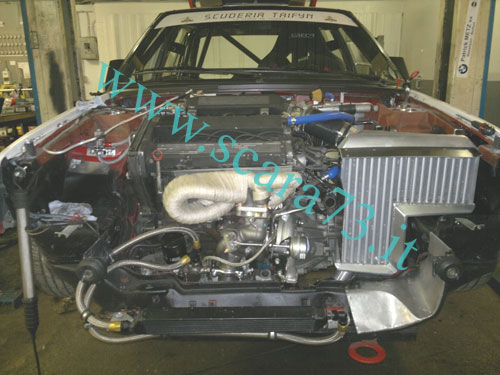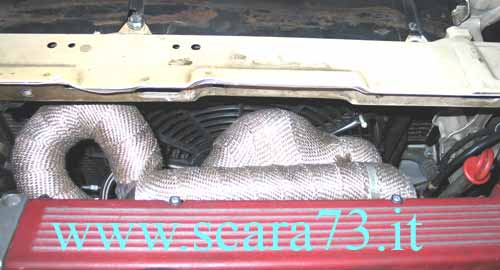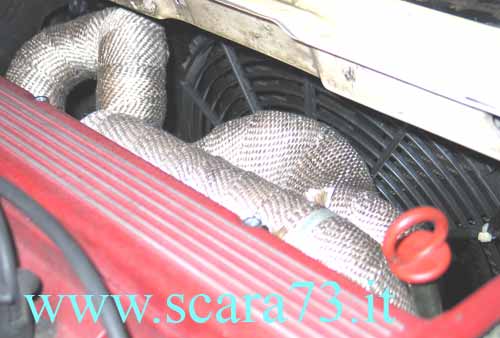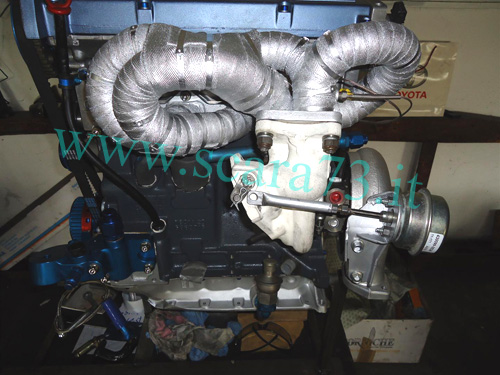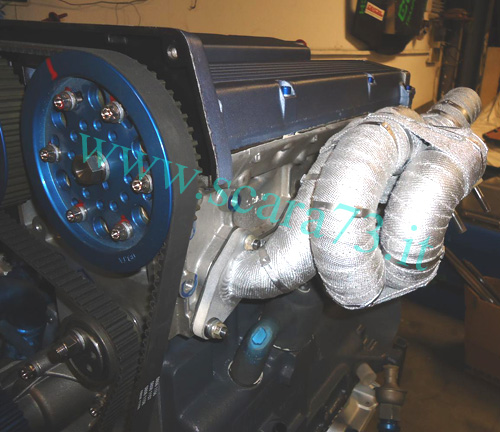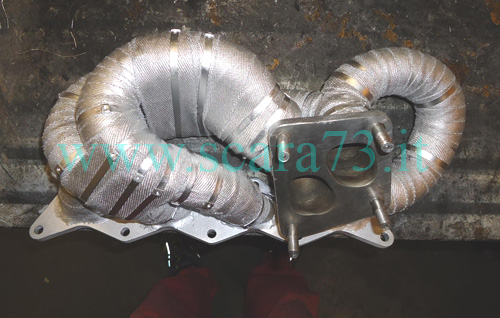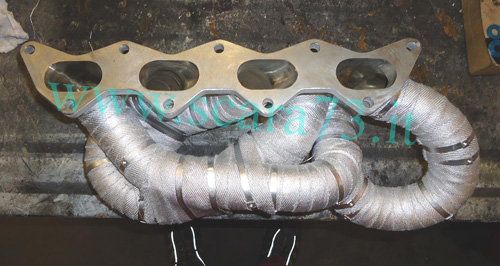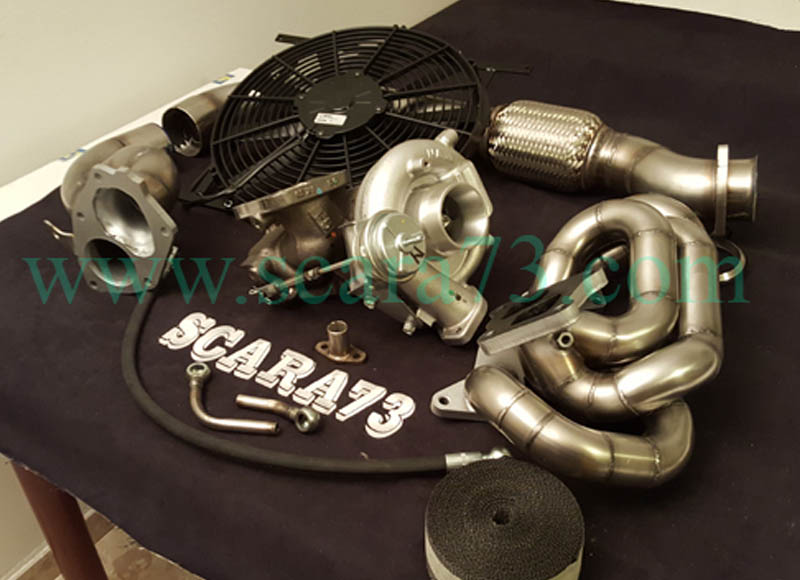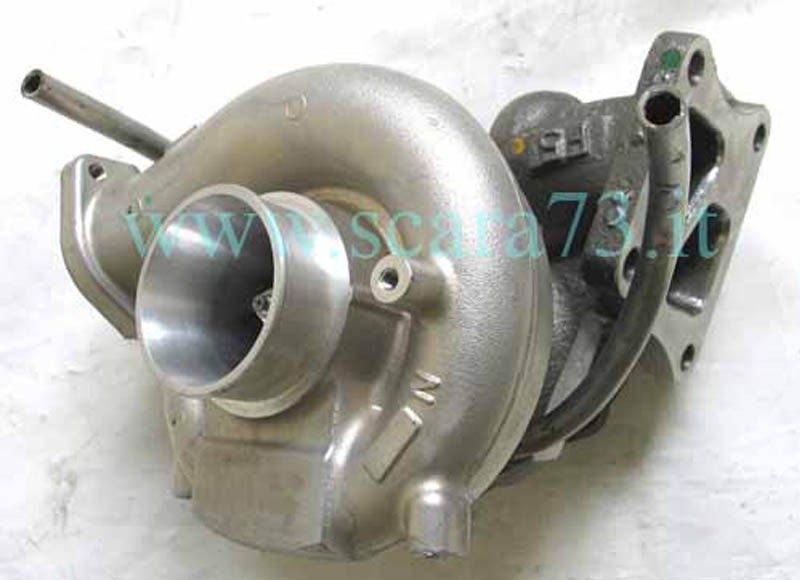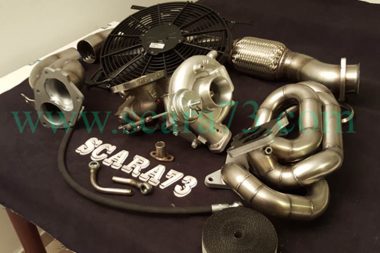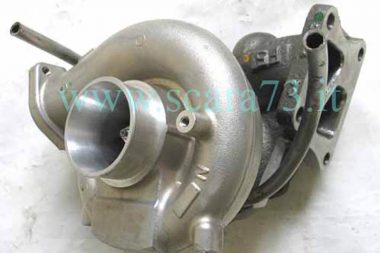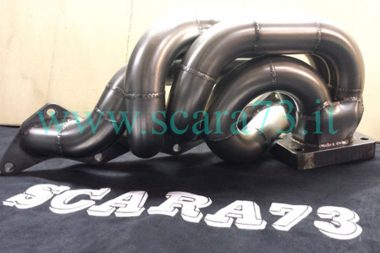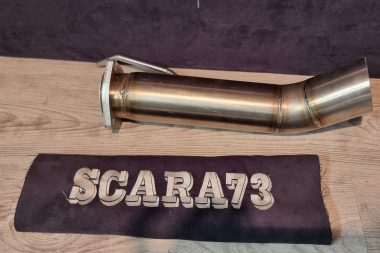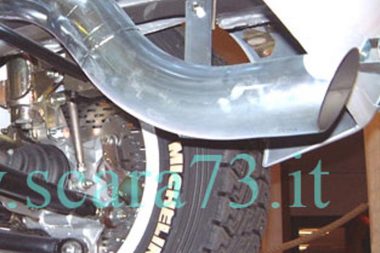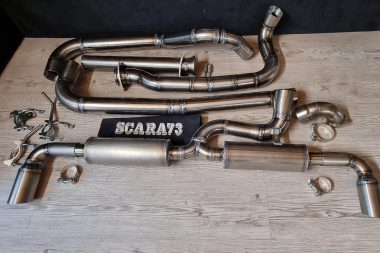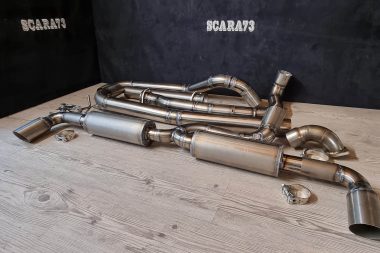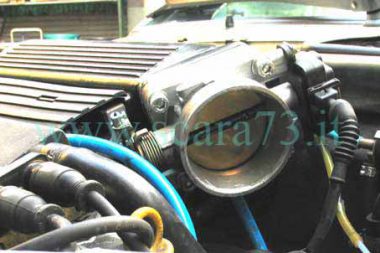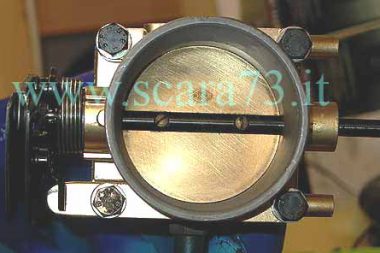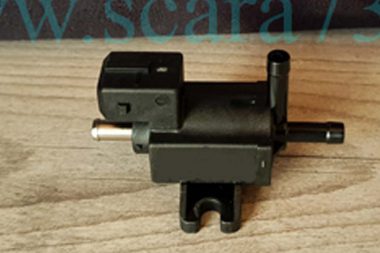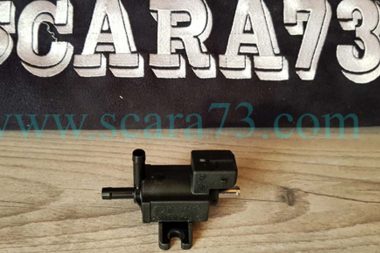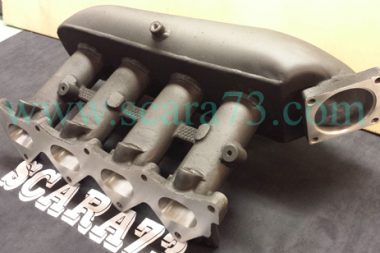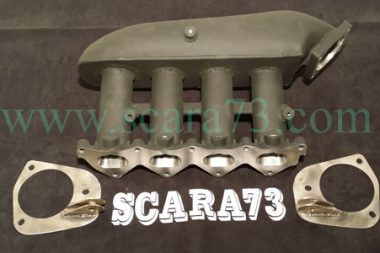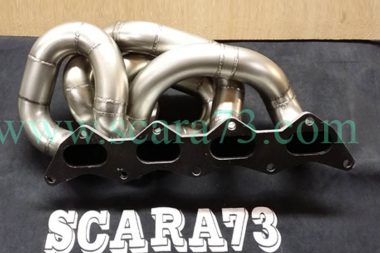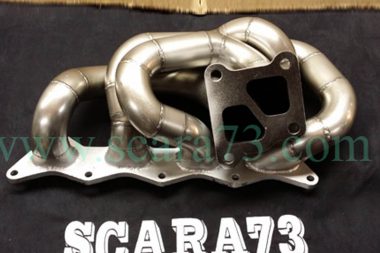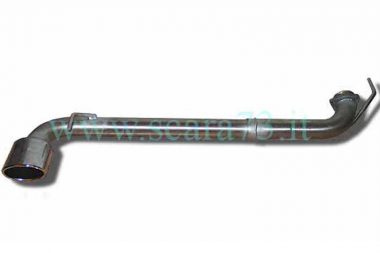LANCER EVO IX TURBO
I had never tried such a turbocharger before, a turbocharger that could push from idle to max rpm. It may seem strange to the reader and it did to me too before trying, but I can assure it is like this.
I am going to give an example to make you realize the potential of this turbo fitted on my prepped delta with max race profile camshafts. I put the car in 4 th gear and floored the gas, obtaining the following pressures at these rpm ranges:
2500 rpm – 0.6 bar
3300 rpm – 1.8 bar
The pressure then stabilizes towards 1.6 bar until 7000 rpm, when the 660 injectors reach their limit, as they are 100% open, and the exhaust gas temperature reaches 940° C at the point where the 1 st and 4 th pipe of the manifold unite before the turbocharger. I was firmly convinced,
before trying, that a Garret GT28m turbocharger would have similar performance to the unit I am using but I changed my mind, and whoever states the contrary should try this Mitsubishi Lancer Evo IX turbocharger…
Differences between this turbocharger and Garret turbos on the Lancia Delta:
• the most important is, IMHO, that the leaves on exhaust side are spoon shaped and not cut at a 45° angle like on Garretts.
• the second difference is the number of leaves on the exhaust endorser (12 for the mitsu and 11-10 for Garrett).
• Twin Scroll on exhaust side •Better sealing of the wastegate door, that doesn’t absolutely leak
• Separation between the area for exhaust gasses going through the exhaust endorser and the ones passing through the wastegate. This is useful for eliminating turbulences that may appear when the wastegate opens on stock or stock-like turbochargers.
• Different build of the leaves on the intake endorser with Ø 49mm rather than the 47.8 mm of the stock unit on non-kat Deltas
• Intake reel much bigger than the stock turbo for non-kat Deltas (the reel is similar in size to a T04B, which is much bigger than the stock T04E fitted on non-kat deltas)
• Exhaust shaft, endorser and reel of very high quality.
•Less exhaust back-pressure
• Less intake air heating compared to a Garrett turbo with similar endorsers
• Inverted intake reel that makes piping towards the intercooler much easier and eliminates a 90° angle
IMO the most important thing is the shape of the leaves on the exhaust endorser which allows this turbo to respond much quicker when compared to various Garretts. By response I mean the time that passes from when the turbo starts loading to the point where it produces max boost. With this turbocharger you can achieve high torque levels at low rpm with medium cams (even past 600 Nm) and power until 430 hp with racing camshafts and constant turbo boost at 1.6 bar. This turbo should work well on stock as well as on heavily prepped engines. After many tried turbos I wouldn’t even go back if someone paid me!!.. you can go much faster with a 10 th of the effort!!!!!
Mai provato una turbina simile fino ad ora, una turbina in grado di spingere dai primi giri fino a limitatore. Sembrerà strano a chi legge e lo era strano anche per me pensarlo prima di provarla ma è così…Vi faccio un esempio per farvi rendere conto delle potenzialità di questa turbina montata sulla mia delta con motore preparato e camme profilo corsa massimo..
Mi sono messo in quarta marcia a 2000 rpm e ho affondato il gas e i valori di pressioni lette al variare dei giri sono:
a 2500 rpm 0.6 bar
a 3300 rpm 1.8 bar
la pressione arriva poi a 1,6 bar circa a 7000 giri dove gli iniettori 660 raggiungono la loro fine essendo aperti al 100% e temperature dei gas di scarico a 940°C nel punto in cui si raccorda in 1° e 4° cilindro prima del turbo.
Ero fermamente convinto, prima di provare, che una turbina garrett GT28 avesse prestazioni simili a quella che sto usando ma mi sono ricreduto e chi afferma il contrario è solo perche non ha provato questa turbina della mitsubishi lancer evo9…
Differenze tra una turbina garrett e questa turbina della mitsubishi evo9 sulla lancia delta:
– La più importante a mio avviso la conformazione delle palette in scarico fatte a cucchiaino rispetto a quelle garrett tagliate a 45° circa
– La seconda il numero di palette in scarico (12 nella mitsu e 11 o 10 nelle garrett)
– Twin scroll in scarico
– Migliore tenuta dello sportellino wastegate che non sfiata per niente
– Separazione della zona riservata all’uscita dei gas dalla girante da quella dello sportellino della wastegate. Questa aiuta bene nelle turbolenze che si creano quando lo sportellino si apre in quella originale o in quelle fatte in modo simile.
– Differente conformazione delle palette in aspirazione con girante da 49mm contro i 47.8 di quella garrett originale delta non kat.
– Chiocciola aspirazione molto piu grossa di quella delta originale non kat (la chiocciola ha una dimensione paragonabile a quella di un T04B che è molto piu grosso del T04E che monta la delta non kat)
– alberino di scarico, girante e chiocciola di scarico di qualità molto elevate.
– minori contropressioni in scarico;
– minore surriscaldamento dell’aria compressa a parità di pressione e a parità di giranti con una garrett
– Voluta inversa della chiocciola aspirazione che aiuta nel raccordo con l’ic per evitare la curva a 90° in uscita dall’intercooler.
Secondo me la cosa più importante è la conformazione delle palette in scarico che rende la risposta di tale turbina fulminea diversamente da tutte le garrett provate che hanno una risposta “piu lenta”.Per risposta intendo il tempo che intercorre tra quando la turbina comicia a vedere pressione e quando raggiunge il full boost.Con tale turbina si riescono ad avere valori di coppia molto alti già dai bassi regimi con camme medie (anche piu di 600Nm) e potenze fino a 430 cv con camme corsa e pressione costante a 1,6bar.Questa turbina la vedo bene sia per motore originale che preparato fino alle potenze scritte sopra. Dopo tante turbine provate non tornerei indietro neanche se mi pagassero!!! …si va molto più forte con un decimo della fatica!!!!!
DYNO TEST
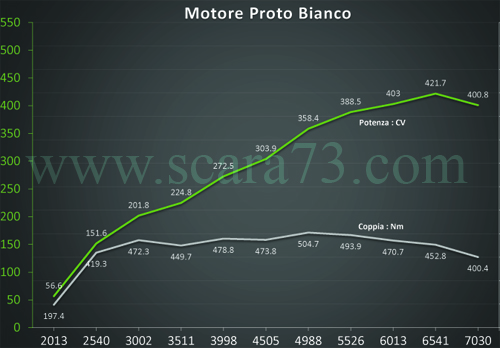
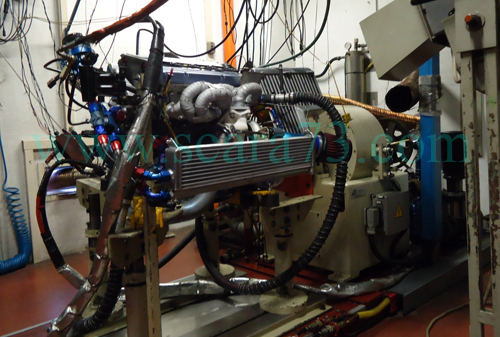
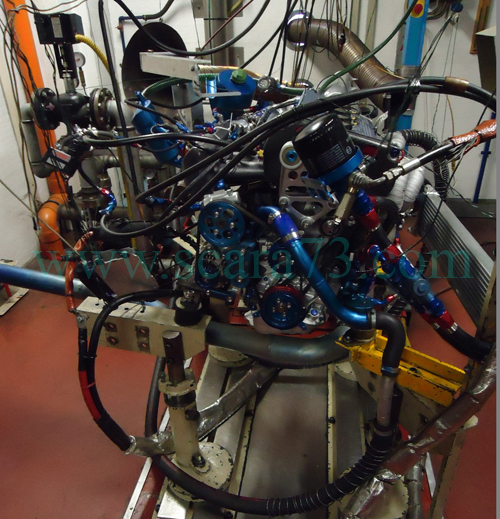
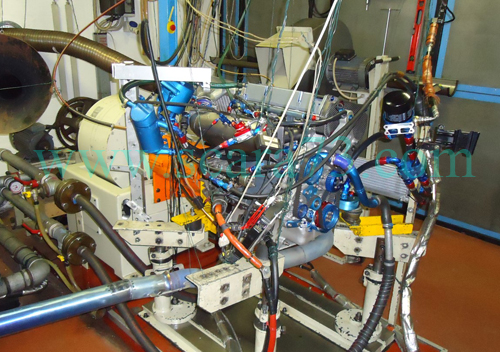
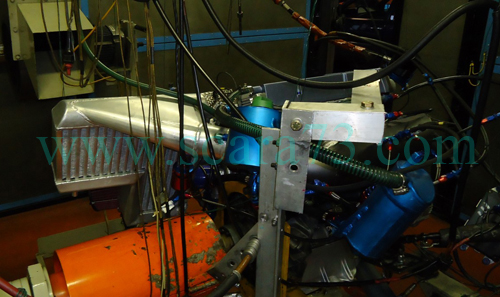
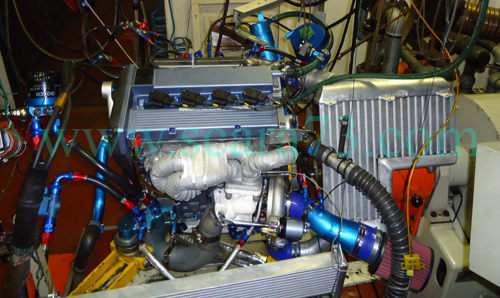
DETAILS
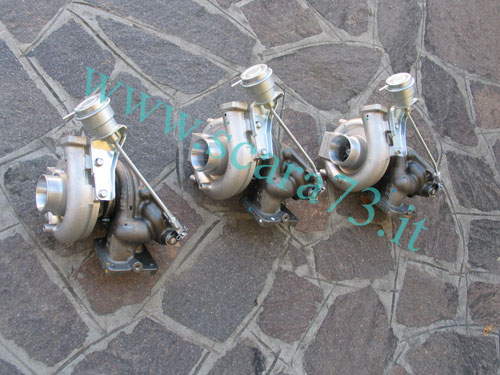
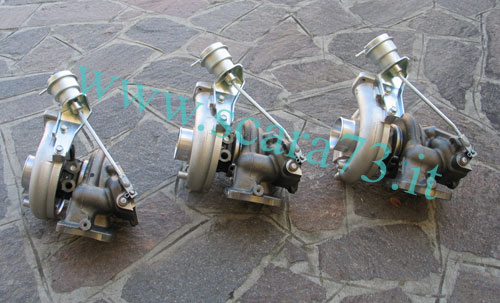
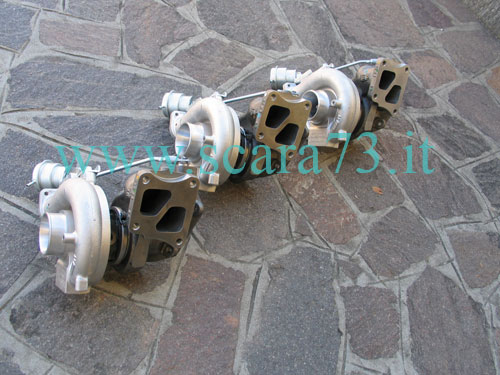
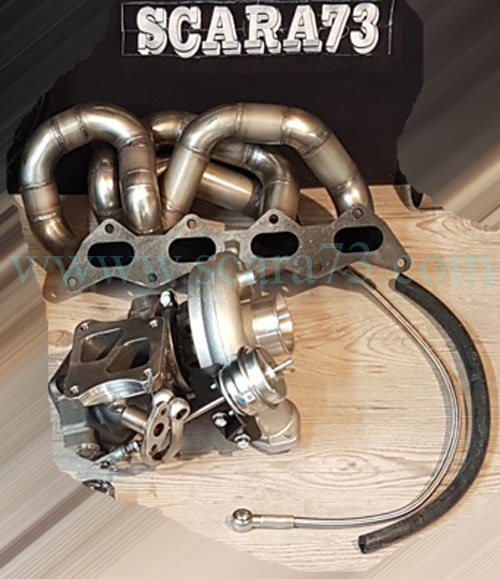
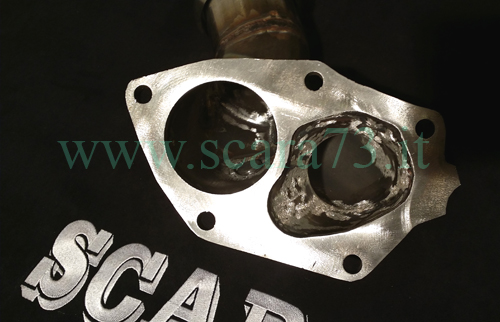
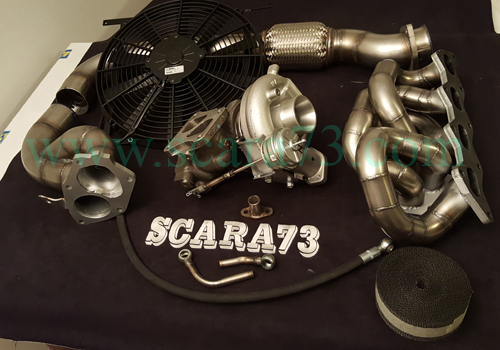
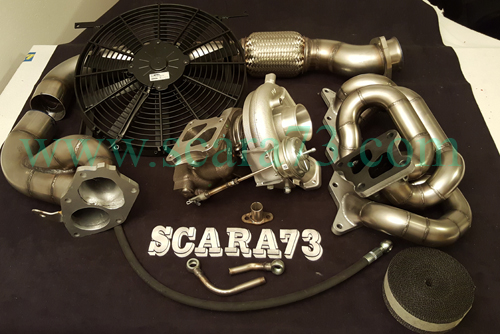
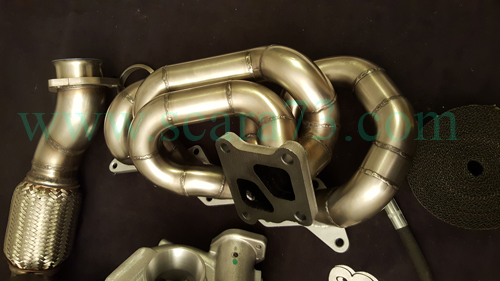
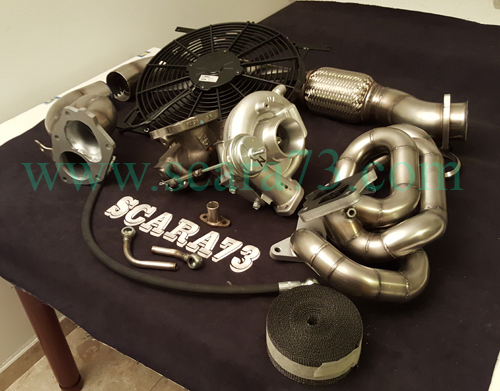
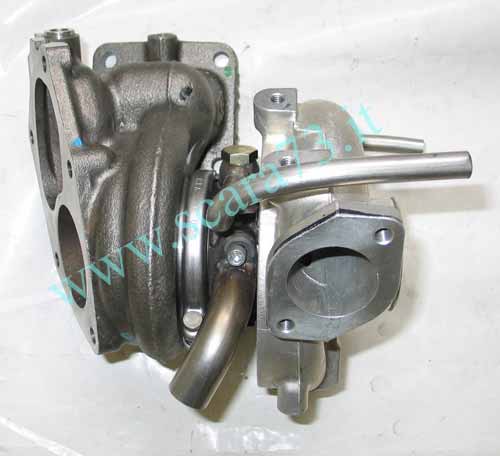
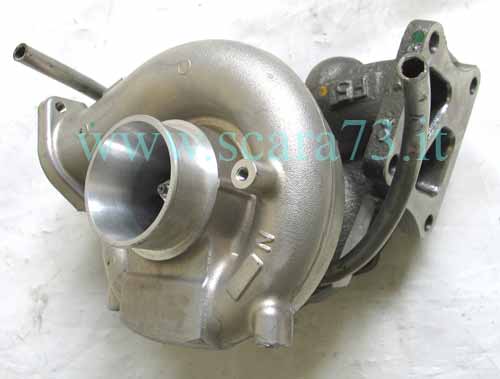
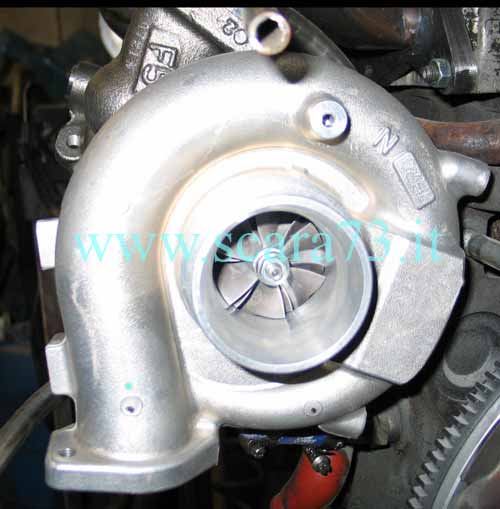
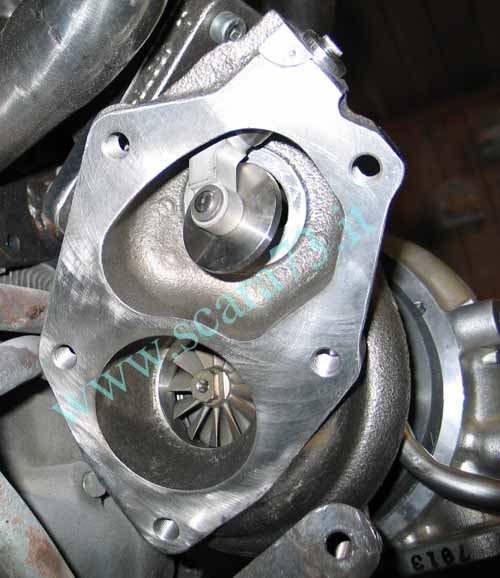
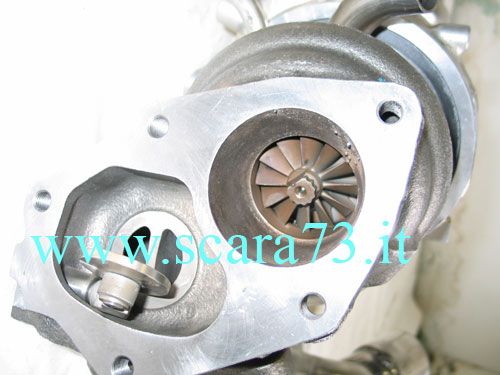
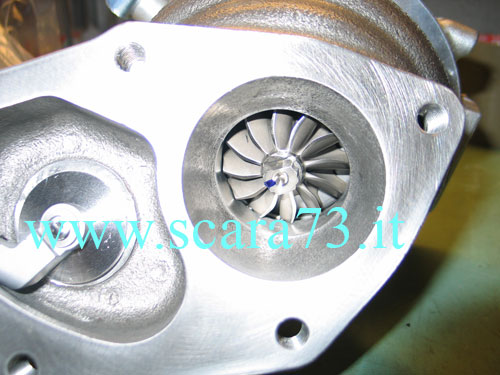
INSTALLATION
